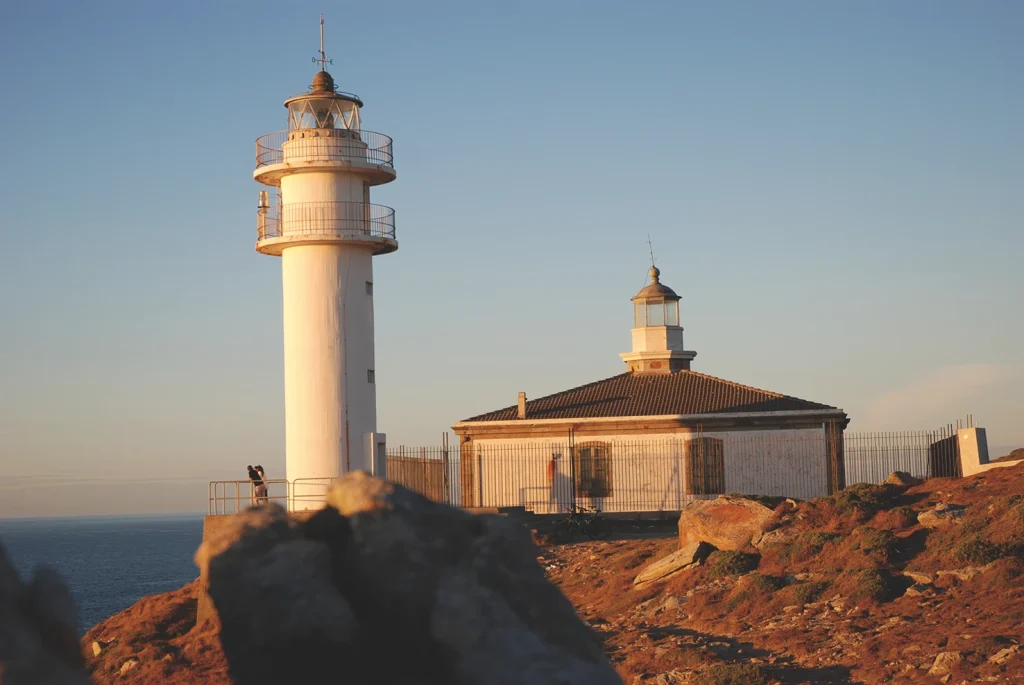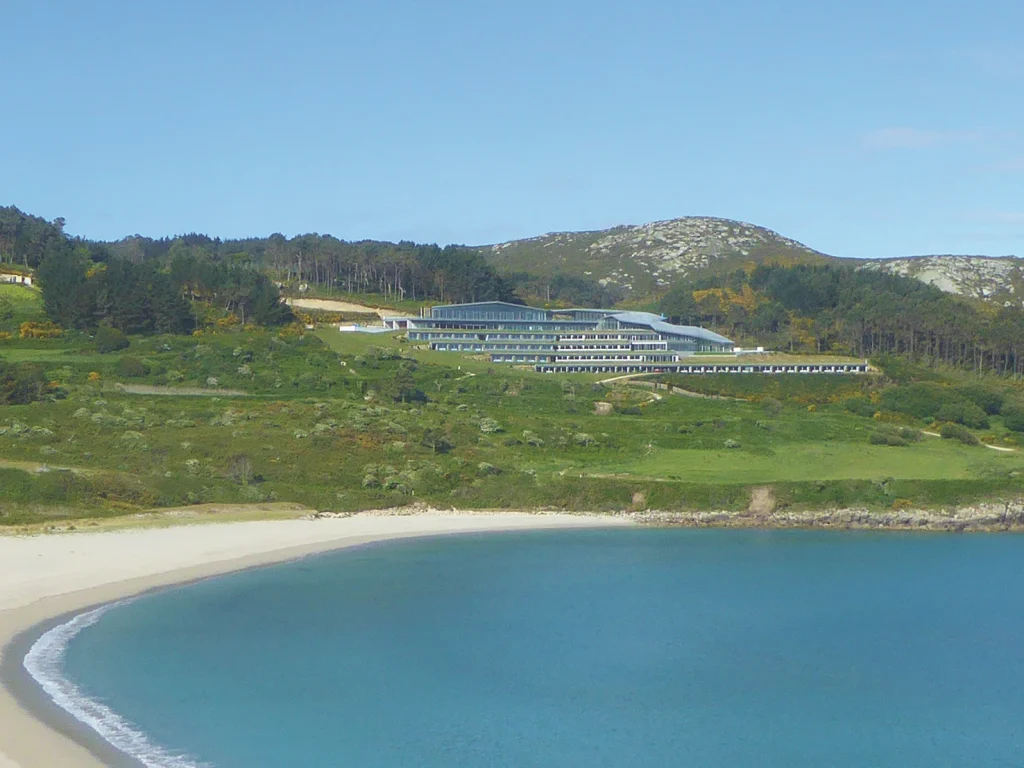This headland is the westernmost point of Galicia and therefore of Spain (Coordinates: 43º 03’ 20’’ lat. N and 9º 17’ 54’’ long. O).
The last ray of sunlight on continental Europe shines on this place twice a year. The first is from 21 March to 23 April; the second, from 13 August to 22 September, according to the local physicist Jorge Mira Pérez. Touriñán takes up its duties from cape Roca in Portugal and passes them on to cape Vardetangen in Norway.
This promontory is basically a peninsula of about two kilometres in length that ends at Punta Buxeirados, and is about 900 m at its widest point. There is an isthmus of 300 m between Porto da Insua and the bay of O Saco de Touriñán. This headland is a windswept tongue of rugged land where trees cannot grow, covered with gorse and heather.
The coastline of Touriñan is rugged and rocky, with hazardous sandbanks that make navigation near the headland a difficult process. The most dangerous one is Laxe de Touriñán, about three quarters of a mile to the west of the cape. It’s a place where many vessels have run aground. This folk song is about the difficulties of navigating the cape:
Santo Cristo of Fisterra, saint with the beard of gold, help me to overcome Laxe de Touriñana.
To the west is the islet of O Herboso or istlet of Castelo, which you can walk to at low tide. The remains of a castro or hillfort can be found there, from which the island gets its name
The lighthouse is located at the western point of the promontory. This old square building is made of ashlar masonry with white rendering, with the stonework left visible at the openings and corners. It was inaugurated on 15 December 1898.
The plans for the design were drawn up by the engineer Adolfo Pequeño, one of the participants in the project for the new Vilán lighthouse, and date back to 1884. The building is quadrangular and measures 14 m on each side, with a hipped roof and a small tower that rises just slightly above the roof top, surrounded by a balcony with iron railings and a lantern with flat panes and vertical uprights. The octagonal tower in the centre of the building was surrounded by the living quarters for the two lighthouse keepers and their families and rooms for services. The first lighthouse emitted a white beam up to a distance of 10 miles produced by a Mares paraffin lamp and an optical system taken from the old lighthouse at cape Vilán. The optical system was restored in 1918 to produce flashes in groups of 2 and 1 every 15 seconds. A new vaporised oil burner lamp was also installed, with a light intensity of up to 20 miles (37 km).

A new and much uglier lighthouse was built in 1981 to replace the old one. A 3 m diameter, 14 m high cylindrical concrete tower, surrounded by two circular balconies with metal railings and a dome for the lantern room. The lantern is a 1,500 watt electric lamp that projects a beam for up to 24 miles.
When you leave cape Touriñán, you’ll come to the crossroads of O Seixo after about 4 km, turn to the left towards Viseo and when you reach the village, turn left again to take the road that goes to Cuño, Lourido and Muxía. The road runs parallel to the coast and is rather narrow with quite a few curves, but it gives you a chance to see some amazing views of the coastline.
When you get to Lourido, the road broadens thanks to the new section that was built for the Parador Costa da Morte, which is near the village.

The idea for building this parador (or hotel that forms part of the national chain of paradores) was born from the catastrophe of the Prestige, which caused a huge oil spill all along the Galician coastline in 2002, especially in Costa da Morte.
The aim of this project was to boost the local economy through tourism, but it took 18 months to build and complete. The newly built hotel finally opened its doors on 25 June 2020, and was soon a roaring success thanks to the tremendous demand over the summer. Since then it has steadily established itself as a part of the regional tourist.
The project designer was the architect Alfonso Penela, who devised a building built like a stairway to enable it to adapt to the slope and reduce the environmental impact. Another environmental plus is the vegetation that acts as a roof over the pavilions for the rooms, which offer fantastic views of the beach of Lourido.
The whole complex occupies 128,000 m2 with 63 rooms, an auditorium, restaurant, cafeteria, spa, swimming pool and other shared areas. A hotel with a cutting edge design where glass and wood dominate the setting.
The history, culture and nature of the region were some of the inspirations behind the furnishings and décor, using simple, timeless designs that combine both past and present. The interior decoration includes en exhibition of the art, photography and crafts of Muxía and Costa da Morte. Local influences can also be seen in the library’s selection of books.
From Lourido you now head off to Muxía, an unmissable stop on this first route.